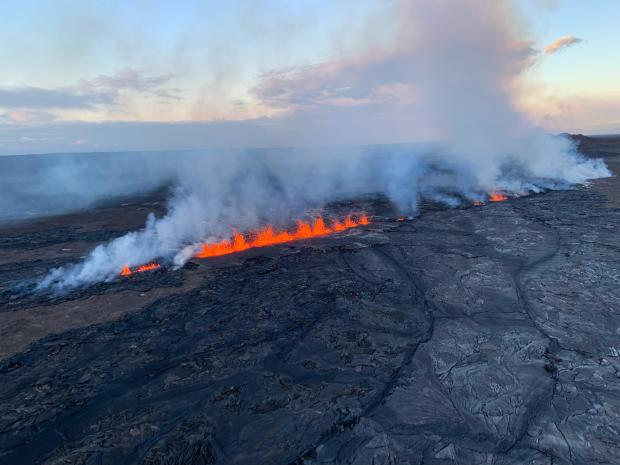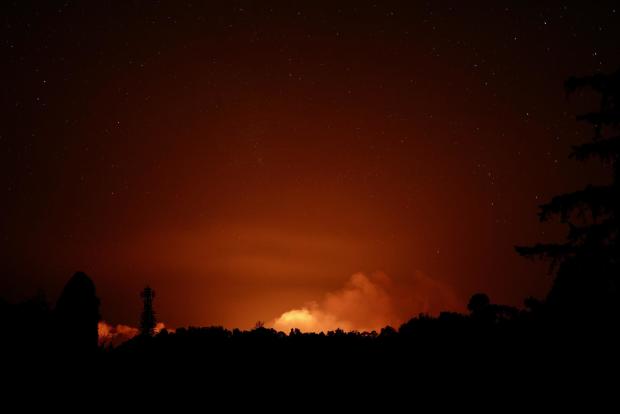Hawaii's Kilauea volcano erupts in remote part of national park with low "eruptive volume," officials say
Hawaii's Kilauea volcano erupted early Monday morning, but officials said the eruption on the state's Big Island doesn't pose an immediate threat to human life or critical infrastructure.
The U.S. Geological Survey's Hawaiian Volcano Observatory warned after 2 a.m. HST of the potential for volcanic ash to shoot into the atmosphere, which can damage planes. About six hours later, just before 8:30 a.m., the observatory said the eruption posed less of a threat, with minor or no ash emissions expected.
The eruption was happening in a remote location of Hawaii Volcanoes National Park and was "low in eruptive volume," the observatory said. Gas emissions and rock fragments ejected from the volcano into the air, known as tephra, were the primary hazards from the eruption, the observatory said.
The observatory said Monday's activity was limited to the area around Kilauea's summit and the southern part of its caldera, the term for the large bowl-shaped depressions that form on volcanoes. According to the agency, the eruption started around 12:30 a.m. about 2.5 miles southwest of the caldera.
A glow seen in webcam images indicated lava was erupting from fissures in the area, the observatory said. Later, in the early morning light, the U.S. Geological Survey captured an aerial image of lava shooting up from the fissures.
Eruptions release high amounts of volcanic gas, which includes sulfur dioxide. The gas reacts with the atmosphere to create volcanic smog, known as vog, which can cause airborne health hazards for people and damage plants, according to the observatory.

The last eruption on Kilauea was in September 2023 and lasted for a week, according to the U.S. Geological Survey. There hasn't been an eruption in the area of Monday's activity in nearly 50 years. The December 1974 eruption lasted about six hours, the observatory said. It wasn't immediately possible for the agency to say how long Monday's eruption would last.
The eruption was preceded by an increase in seismic activity at Kilauea's summit Sunday, an indication that magma was moving below the surface, according to the observatory.
In one eight-hour period, there were approximately 250 earthquakes beneath Kilauea's summit region, according to the observatory. The most powerful quake was magnitude 4.1 on Sunday night.

- In:
- Volcano
- Eruption
- Hawaii
Alex Sundby is a senior editor at CBSNews.com. In addition to editing content, Alex also covers breaking news, writing about crime and severe weather as well as everything from multistate lottery jackpots to the July Fourth hot dog eating contest.
TwitterDisclaimer: The copyright of this article belongs to the original author. Reposting this article is solely for the purpose of information dissemination and does not constitute any investment advice. If there is any infringement, please contact us immediately. We will make corrections or deletions as necessary. Thank you.






